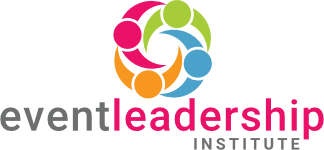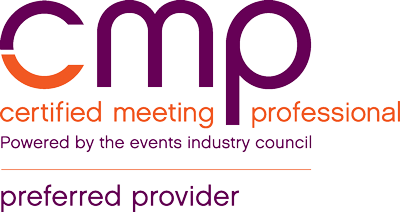
Special Event Design Certificate OD
Course Overview
Producing an aesthetically pleasing special event that truly impresses seen-it-all attendees can be a daunting task. And today’s event designers are expected to incorporate food and beverage, technology, and branding, find innovative ways to play with color, create unique focal points, use lighting to make a space feel more intimate, and select florals that don’t max out the budget. Do you have the creative edge? Or, at a minimum, can you intelligently “talk the talk” with creative vendors to convey your vision?
This course covers the fundamental principles of modern event design, including creating a design concept that achieves the client’s goals, meets their budget, and can be executed in the venue within the time allotted. Implement a wide range of elements into your next design concept, such as floral, furniture, lighting, branded accents, entertainment, technology, and others. Identify opportunities for creating custom fabrication pieces that can be unique focal points for guests, which helps to set yourself apart from others. By the end of this course, you will be able to evaluate a venue’s challenges and assets that you will incorporate into a design concept and how to ensure you can execute your vision within the time and space available.
LEARNING OUTCOMES
- Understand the fundamental principles of modern event design and how to create a design concept that achieves the client’s goals, meets their budget, and can be executed in the venue within the time allotted.
- Learn how to implement various elements into your design concept, including flowers, furniture, lighting, branded accents, entertainment, technology, and others.
- Identify opportunities for creating custom fabrication pieces that can be unique focal points for guests, which helps to set yourself apart from others.
- Learn how to evaluate a venue’s challenges and assets to be incorporated into a design concept and how to ensure you can execute your vision within the time and space available.
Scroll down to see more details, including the weekly outline.
 Event Leadership Institute has been approved by the Events Industry Council (EIC) as a Preferred Provider of continuing education courses, including the COVID-19 Event Strategy & Design Certificate course, which qualifies for CMP continuing education credit. Determination of continuing education credit eligibility or Preferred Provider status does not imply EIC’s endorsement or assessment of education quality.
Event Leadership Institute has been approved by the Events Industry Council (EIC) as a Preferred Provider of continuing education courses, including the COVID-19 Event Strategy & Design Certificate course, which qualifies for CMP continuing education credit. Determination of continuing education credit eligibility or Preferred Provider status does not imply EIC’s endorsement or assessment of education quality.

Learn From An Industry Expert
New York-based event designer Lindsay Landman has been producing innovative weddings and special events across the globe since 2001. Her company, Lindsay Landman Events, has been a market leader in the unique integration of event planning, design, and production, initiated by Lindsay’s trademark focus on the intersection of beauty and brains, form, and function.
Lindsay is a go-to media resource, providing insight on weddings, design, etiquette, and entertaining for dozens of publications, including New York Magazine, Brides, The Knot, Inside Weddings, and BizBash, as well as television outlets such as the Style Network and ABC-TV. Lindsay is passionate about writing for both business and pleasure and flexes her writing muscles regularly as a contributor for Examiner.com and ChicTip.com as well as on the Lindsay Landman Events blog.
Lindsay earned her B.A. in English from the University of Pennsylvania, and in addition to a decade of event design coursework, she is currently studying Interior Design at the Fashion Institute of Technology. Beyond her role as President and Creative Director of Lindsay Landman Events, Lindsay is the founding President of the New York Chapter of Wish Upon a Wedding and the National Event Chair for the organization, as well as a busy wife and mother of two boys. Lindsay and her family reside in New York City.
Big Picture Concepts
- Defining event design
- Taking a holistic design approach
- Functional vs. aesthetic design
- Key pillars of design success
Creativity & Inspiration
- Sources of inspiration
- Overcoming ‘designer’s block’
- Finding your personal voice
- Identifying the right clients for your style
Designer's Toolbox
- Hard, soft and live goods
- Lighting
- Graphics, patterns and textures
- Experience, entertainment and gifting
- Colors
- Resource directory
- Design & communication process
Designing With Color
- Complementary colors & the color wheel
- Primary, secondary & tertiary colors
- Pairings and palettes
- Perception of color
- Communicating about color
- Using the Pantone Matching System (PMS)
Flowers, Trees & Foliage
- Types of common flowers utilized, pros and cons
- Seasonality and other logistics
- Vases, urns and container options
- Working with plants & trees for aesthetic and functional use
Centrepieces, Tabletop & Candles
- Linen options
- Chair options
- The tabletop real estate battle: decor vs. food service
- Working with mirrors & other reflective surfaces
- Candles: natural & artificial
- Fire code issues with open flame
Furniture & Fabrics
- Designing a seating enclave
- Feng Shui tips for furniture placement
- Working with light up pieces
Focal Points
- Entrances
- Stages
- Check-in & escort card table
- Product displays
- Bars and buffets
- Ceremony locations
Walls, Backdrops & Flooring
- Function uses: hiding areas, dividing a room, shrinking a space
- Aesthetic uses: highlighting key areas
- Pipe and drape
- Sculpted walls
- Stage backdrops
- Custom or branded flooring and carpeting
Branding Overview & Corporate Events
- Gobos & projections
- Wait staff, coasters, napkins and other catering accents
- Coffee table books, pillows, framed photos & other furniture accents
- Social event branding
Lighting
- The importance of lighting your decor
- Functional vs. aesthetic lighting
- Evaluating and utilizing natural light
- Renting chandeliers, lamps and other fixtures
- Tips for working with office lighting
- Up-lighting, washes, pin spotting and other techniques
- Working with LEDs
Rigging, Installation & Venue Logistics
- Rigging basics
- Out of the box rigging solutions
- Avoiding any venue-related surprises on event day
- Hiding wires, jacks, and other evidence of the design ‘underbelly’
- Evaluating load-in & set up time requirements
- Evaluating load-in space restrictions
- Factoring in local fire code regulations
Technology & Special Effects
- Projection mapping
- Integrating photo booths
- Integrating entertainment
- Balloon drops, confetti canons, and other dramatic elements
Floor-planning & Room Layout
- Importance of a scaled floor-plan
- Items often not accounted for
- Demo on creating a 3D rendering
Choosing an Event Place
- What challenges does the venue present
- What assets should be highlighted
- Functional considerations
- Rigging points, outlets, loading dock & freight elevator
- Verifying the venue’s measurements
- Tents
- From design to production
Working With Your Vendors
- Where to source your supplies
- How to choose and test out a new vendor
- How to insure your vendors meet your standards
- Negotiating, payment schedule, and insurance
Client Connections
- Questions to ask
- Getting them to define success
- Understanding what “modern” or “classical” means to them
- Listening visually
- Getting a proper attendee profile
Budgeting & Pricing
- Selling your vision
- How many concepts to present
- Inspiration boards & Pinterest
- Pricing our your designs
Group Purchase
What students say about ELI certificate courses
-
"“This was one of the best online learning courses I have taken. The material was fresh and spot on. She was very engaged, and I almost felt like she was sitting in my office talking to me. She responded to students’ questions thoroughly and timely. Awesome job!”"
Denise K.All RelEvents | Germantown, MD -
"“Thank you Lindsay! You are amazing! I can immediately implement what I have learned in this course on projects I am working on as a freelancer, while starting my own business.”"
Jaritza C.NOW | Aruba -
"“Amazing course! Lindsay was a perfect instructor. Her lectures were spot on and lively. She answered all questions! She touched on so many things, and this course had so much info, it could have been a full year course!.”"
Allison T.Allison Terzyk Events | Philadelphia, PA -
"“A credential from the Event Leadership Institute carries a lot of weight with us. Given the quality and depth of their content, we know they train people for the rigorous demands of our industry, and come to work ready to hit the ground running.”"
Adam S.Managing Director, Sequence Events -
"“When evaluating new candidates for full time or freelance staff, one of the first things we take into consideration is the person’s legitimate, industry-specific education. A credential from E.L.I. tells us they are on the right track.”"
Rob H.Partner, Empire Force Events

The Event Leadership Institute stands behind all of its content. If you feel you didn't learn what you expected to in this course, just let us know within 30 days of your last lesson and we'll give you a full refund. Click here to view our refund policy and full terms & conditions.
Ready to get started?
Feel free to get in touch with your questions

